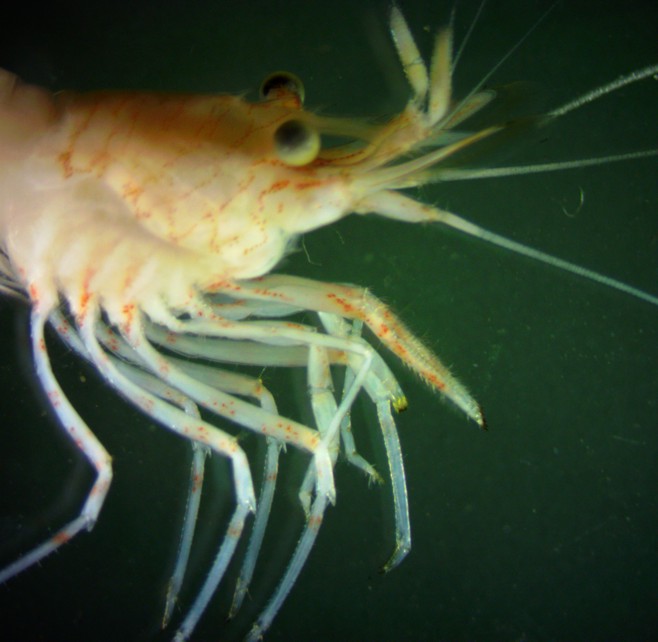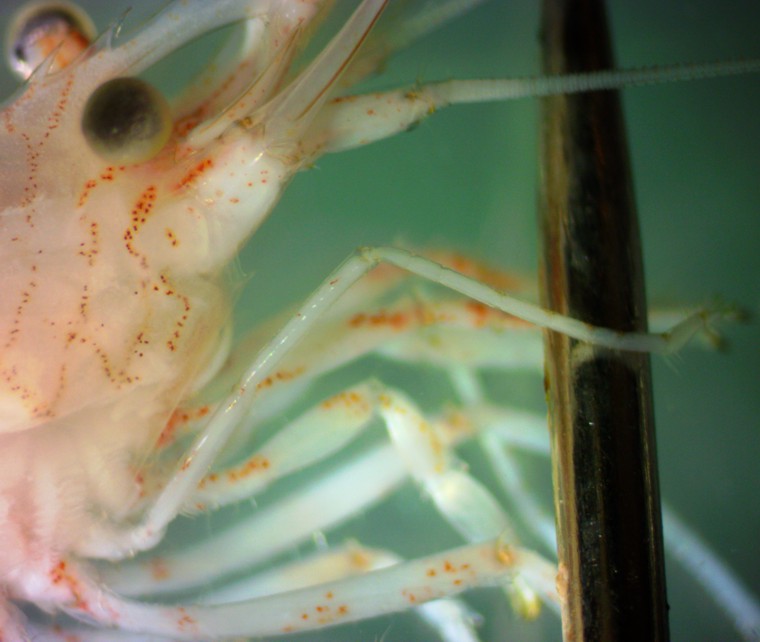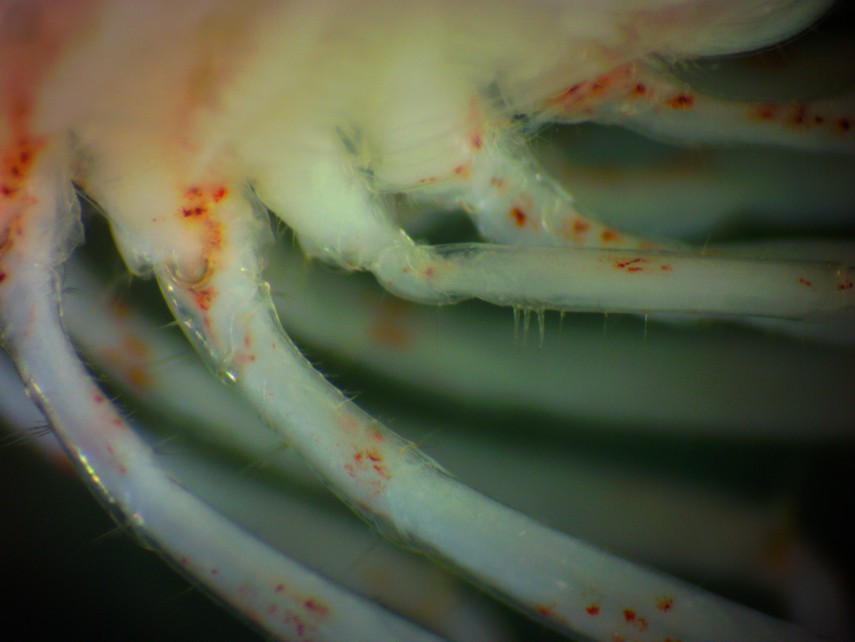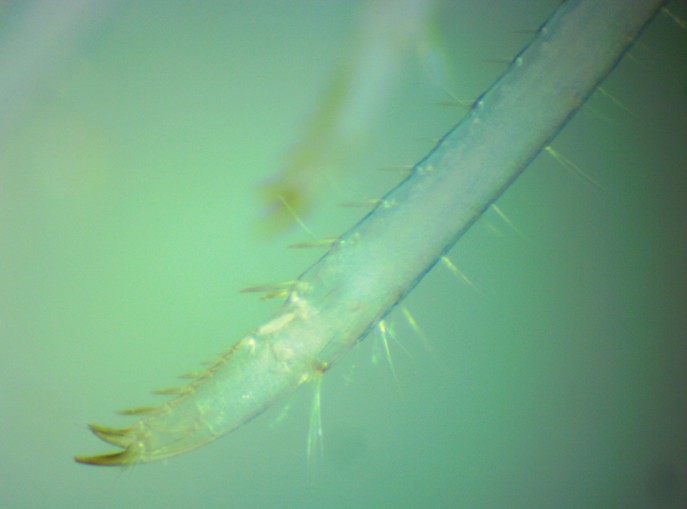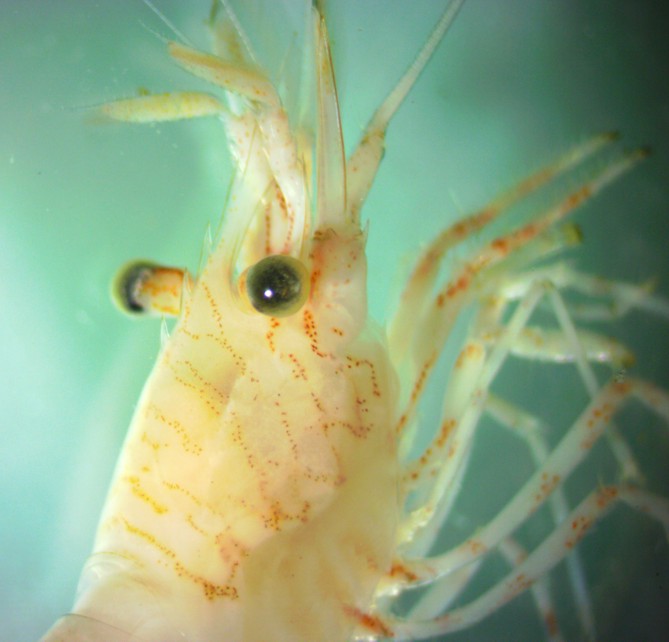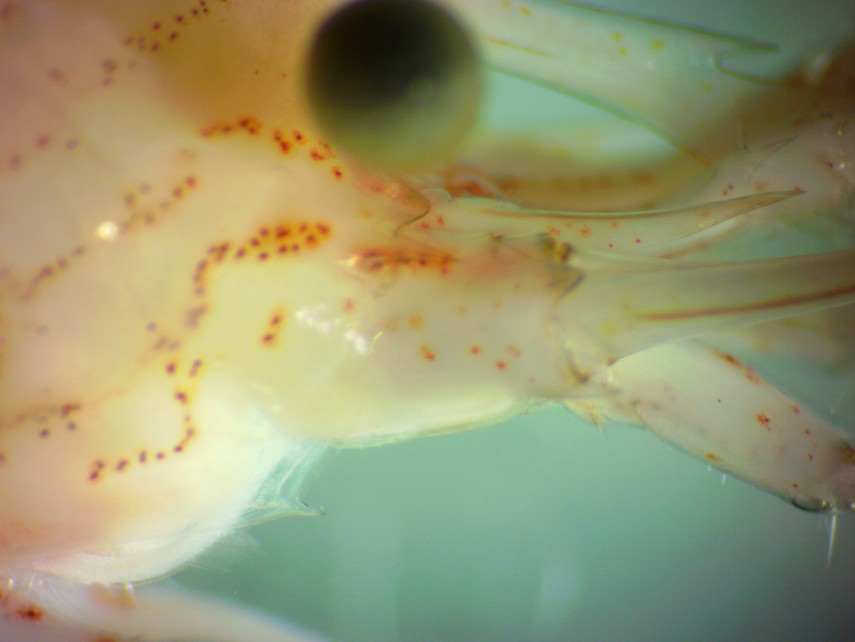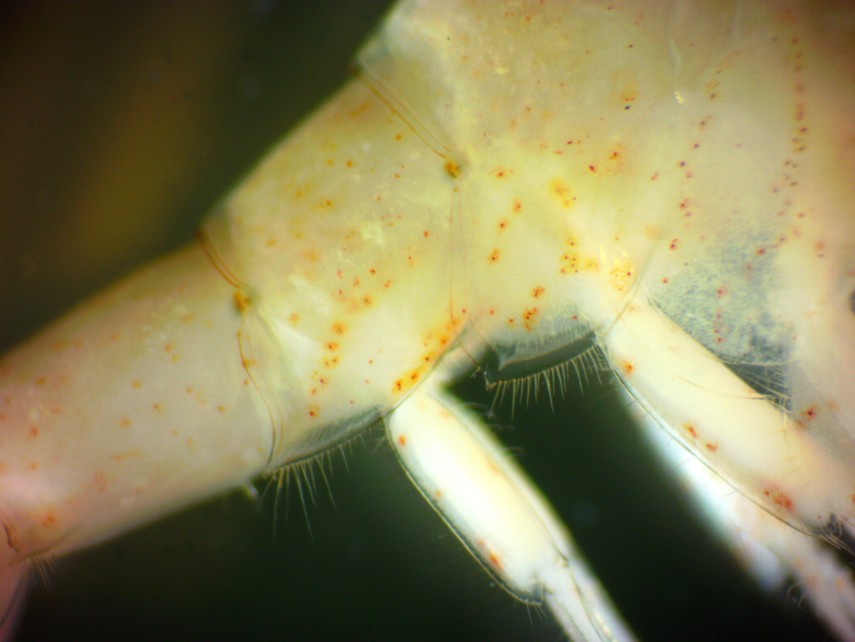| Description: Shrimp of Family Hippolytidae have no exopodites on their pereiopods. Pereiopod 1 is chelate rather than subchelate (photo), and the carpus of pereiopod 2 is subdivided into 3-7 multiarticulated units. A rostrum is present and often has spines but the spines are not movable. The eyes project out from under the carapace and are visible from above. Genus Heptacarpus has a toothed rostrum (photo) and 7 articles in its multiarticulated 2nd carpus (photo). Heptacarpus sitchensis has a well-developed rostrum slightly shorter than the postorbital carapace (photo), but not quite long enough to reach the end of the 2nd antennal scale. The anterior margin of the first segment (base of the peduncle) of the first antenna (antennule) has only one spine where it articulates with the second segment (photo). The species has no supraorbital spine (photo). The dactyls at the ends of pereiopods 3-5 have bifid tips (photo). The rostrum is well-developed and with spines, and reaches beyond the second article of antenna 1 (photo). It has a pterygostomial spine at the anteroventral margin of the carapace (photo). The pleuron of abdominal segment 4 has a ventral spine (photo). Pereiopods 1 and 2 and the 3rd maxilliped may or may not have an epipodite (photo). Note that this description is at variance with the description in the key but agrees with Wicksten et al. (1996) below. The 3rd maxilliped is just long enough to reach slightly past the end of the 2nd antennal scale (photo). Color variable, and is mostly lost at night. The carapace is often translucent, greenish, with distinctive thin oblique reddish stripes but the background color may be brown or even white. The legs have red bars. The abdomen is mostly clear or often bright green (photo). One reference states that both the carapace and the abdomen may have blue spots. Total length for females to about 34 mm, males smaller. |
| How to Distinguish
from Similar Species:H.
moseri has a much longer 3rd maxilliped
which reaches beyond the antennal
scale by at least half the length of its distal article, and
it typically
lives much deeper. H.
stimpsoni
has a shorter rostrum
which reaches beyond the first segment of the peduncle on the 1st
antenna but not as far as the middle of the 2nd antennal
scale. H.
paludicola's
rostrum
reaches past the end of the 2nd antennal
scale.
|
| Geographical Range:
Resurrection
Bay, Alaska to Baja California
|
| Depth Range:
Mid-intertidal to
12 m
|
| Habitat:
Can be abundant in mid-
and low intertidal of rocky coasts and sublittoral, in Zostera
eelgrass beds, and on floats.
|
| Biology/Natural
History: This
is one of the most common intertidal shrimps along the US Pacific
coast.
The variable colors in this shrimp are mainly due to colors in the
tissues
rather than in the exoskeleton. The intensity of the color
fades
when the shrimp has not eaten much recently. Females mate and
brood
eggs more than once, molting between broods. Mating takes
place rapidly,
shortly after the female molts. The species may be
parasitized by
bopyrid
isopods, especially in the Salish Sea area, which
superficially appear
to be a clutch of eggs carried under the abdomen.
In Alaska this isopod species is Hemiarthrus
abdominalis.
Jensen
(2014) says that H.
paludicola may be a synonym of this species.
|
| Return to: | |||
| Main Page | Alphabetic Index | Systematic Index | Glossary |
References:
| Dichotomous Keys:
Carlton, 2007 Kozloff, 1987, 1996 |
| General References:
Jensen (1995) Jensen (2014) Lamb and Hanby (2005) Morris et al., 1980 (as H. pictus) O'Clair and O'Clair (1998) Ricketts et al. (1985) |
| Scientific
Articles:
Bauer, R.T., 1976. Mating behavior and spermatophore transfer in the shrimp Heptacarpus pictus (Stimpson) (Decapoda: Caridea: Hippolytidae). Journal of Natural History 10: pp 415-440 Bauer, R.T., 1981. Color patterns of the shrimps Heptacarpus pictus and H. paludicola (Caridea: Hippolytidae). Marine Biology 64: pp 141-152 Wicksten, Mary K., Robyn Flynn, and Michael Fagarason, 1996. Heptacarpus pictus (Stimpson) synonymized with Heptacarpus sitchensis (Brandt) (Decapoda, Hippolytidae). Crustaceana 69:1 pp 71-75. DOI 10.1163/156854096X00097
|
| Web sites:
|
| General Notes and
Observations: Locations,
abundances, unusual behaviors:
|
Authors and Editors of Page:
Dave Cowles (2014): Created original page
CSS coding for page developed by Jonathan Cowles (2007) Salish Sea Invertebrates web site provided courtesy of Walla Walla University
